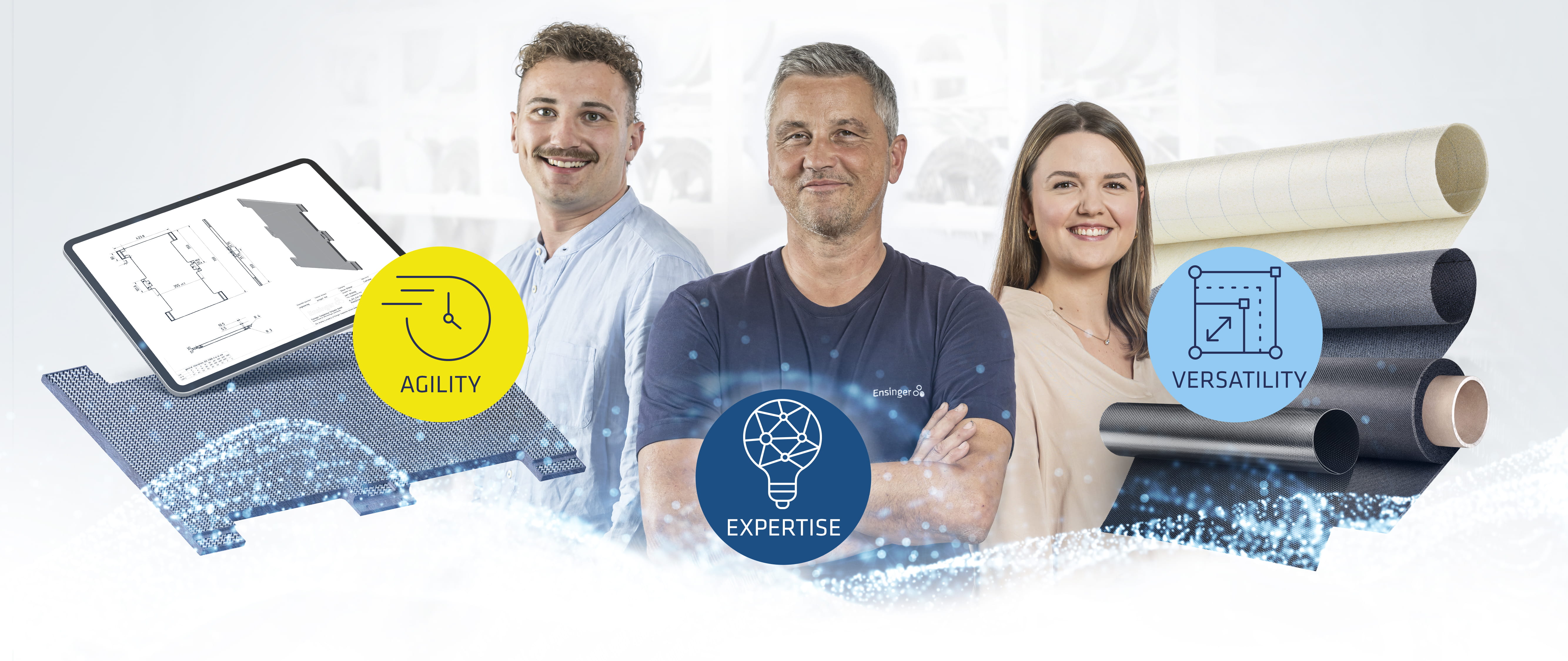
Composite solutions have already become integral to numerous applications due to their outstanding properties. They are used wherever high mechanical, chemical, and thermal demands must be met with minimal weight – from aerospace and infrastructure to energy, medical technology, and consumer goods such as sports equipment.
Many applications use thermoset composites with glass or carbon fibres. While offering beneficial mechanical properties, they can't be reshaped or welded and are difficult to recycle. In this context, thermoplastic composite materials – fibre-reinforced plastics with a thermoplastic matrix – offer numerous advantages.
As a leading manufacturer of
high-performance thermoplastic materials, we develop and produce tailor-made thermoplastic composite materials precisely matched to your requirements. Fibre type, fibre architecture, and fibre volume content, as well as the thermoplastic matrix material used, can all be configured for the specific application. In addition to carbon and glass fibres, alternative reinforcement materials such as aramid, basalt, or natural fibres are available. We also offer a wide range of thermoplastic matrix materials, from commodities such as polypropylene to high-performance plastics like PEEK.
All process steps are carried out entirely in-house. This not only ensures stable production conditions and reliable scalability but above all: maximum flexibility. We step in where existing solutions reach their limits. Thanks to our agile manufacturing structure, we offer rapid adjustments, efficient prototyping, and a significantly shortened time-to-market – even for demanding series projects.
As experts in thermoplastic composite materials, we provide you with comprehensive expertise, strong technical competence, and industry-specific know-how at every stage of the project. Let us advise you and find the right solution for your project.



Robust, cost-effective, and versatile – for a broad range of industrial applications
Particularly light and strong – for maximum performance at minimal weight
The semipreg production process begins with grinding the plastic granules into powder with tight tolerances on the final particle size. The powder is then applied to the fabric in the semipreg plant and melted onto the fabric. The resulting intermediate product is called semipreg. If the semipreg is subsequently processed using a double-belt press which fully impregnates and consolidates the material, it is then referred to as a prepreg. We manufacture thermoplastic semipregs and prepregs in the various polymer and fabric combinations listed above.
An organosheet is a multilayer construction of pre-impregnated fabrics that are consolidated. Our thermoplastic organosheets are produced from semipreg material or using the film-stacking process, with components individually matched to your application. With a working width of up to 1,300 mm, the double-belt press processes not only our in-house thermoplastic semipregs but also unidirectional (UD) materials, UD cross-ply materials, laminates, and sandwich laminates with various core materials such as foam or honeycomb.
Plates made from thermoplastic fibre-reinforced plastics can be supplied in thicknesses from 1 mm to 55 mm in sizes up to 1,200 × 900 mm, and in thicknesses up to 95 mm in sizes of 500 × 600 mm. Most thermoplastic matrix materials are available.

With over 15 years of experience in developing, producing, and applying thermoplastic composites, Ensinger supports you at every stage of your project – from the initial material concept to series production.
With our materials expertise and a fully integrated in-house process chain, we act as a true engineering partner who understands your project’s needs.
Our services at a glance:
Thermoplastic fibre-reinforced plastics offer mechanical properties at almost metallic levels despite their low weight – especially when using continuous oriented fibres – achieving:
Thermoplastic fibre-reinforced plastics exhibit excellent vibration damping thanks to their inherent damping properties. This can be particularly advantageous in applications where vibration needs to be filtered.


The goal of orthopaedic trauma treatment is to restore a broken bone to its correct position and orientation. When this is done by means of surgical intervention, fixation systems are used to secure the bone in the anatomically correct position. Manufacturers of such internal fixation systems need to meet many and exacting requirements in terms of function, weight and appearance, at the same time as keeping an eye on the overall costs in view of increasingly tight budgets.
